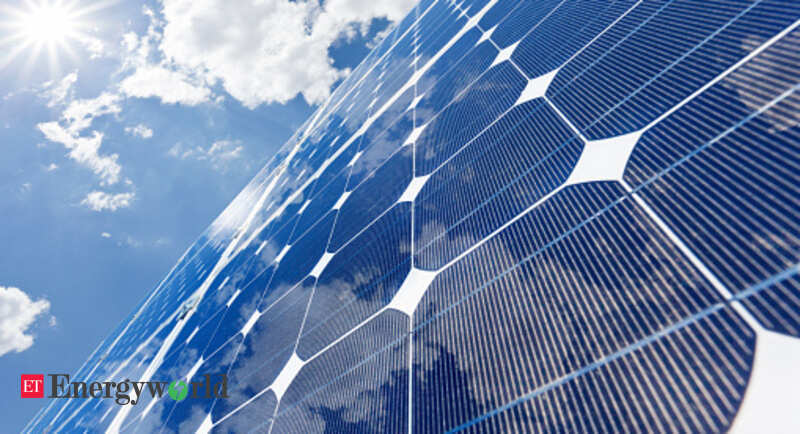Rebel-held Syria Shifts Power – Towards Solar Energy, Energy News, ET EnergyWorld

[ad_1]
“We used to depend on diesel generators, but it was a fight against fuel shortages and price hikes,†said Khaled Mustafa, one of the dozens of farmers who put up the signs. in the Idlib region.
“So we went for solar power instead,” he said. More than three million people live in the Idlib region in northwestern Syria, much of which is controlled by jihadist forces and other rebels.
Across Syria, at least 90% do not have a stable power supply, according to the United Nations Development Program (UNDP). In rebel areas, there is little hope of having state-supplied electricity.
Instead, dark blue silicon panels have become commonplace – installed on rooftops, in hospitals, or between tents in massive IDP camps.
Once small and smoky, diesel generators powered many homes. But with regular fuel shortages driving up prices, solar panels are now seen as a cheaper, more efficient and more reliable alternative.
In Mustafa’s plot, solar panels hanging from rotating metal plates rotate to follow the movement of the sun.
They are one of 200 solar panels purchased two years ago by an agricultural cooperative of nearly 20 farmers, at a cost of around $ 4,000.
The panels feed water pumps from a well, irrigating three hectares (seven acres) of cooperative farmland, as well as neighboring fields.
“Even if (state) electricity is restored, solar power will remain cheaper,†Mustafa said.
– “Valid alternative” – ​​Syria’s electricity production was cut by at least half during the conflict, but as the fighting subsided, renewable energy sources increased, UN says .
“Since armed clashes have subsided and most of the country is in a more stable situation, solar power generation has increased as a valid alternative,†UNDP said.
In controlled regime areas, solar panels power both homes and public institutions such as universities.
As for those under rebel control, a survey found that eight percent used solar energy as the main source of energy in their homes, according to a report by the Education and Conflict Review, published by University College London.
He also revealed that a tenth of people use solar energy to heat water, and a third of people use solar energy as a secondary energy source, for lighting and charging batteries.
In the rebel-held town of Dana, glittering solar installations cover the rooftops.
“Sales increased 300% between 2018 and 2021,†said solar panel seller Abdulhakim Abdul Rahman. Farmers represent most of its clients.
A single agricultural project can require “100 panels, sometimes even 500”, specifies the trader.
Abdul Rahman said the panels he imports – mainly from Turkey, but also from Germany and China – can last up to 20 years.
– Powering Hospitals – In his tiny apartment, Zakariya Sinno turns on a ceiling fan and throws revolutionary Syrian hymns into a loudspeaker to show off the power of his solar installation.
Like many of his neighbors, he installed three panels on his roof.
“It’s enough to power the fridge, washing machine and lighting,†Sinno said.
Hospitals have also installed solar panels.
In 2017, the Union of Medical Relief and Care Organizations (UOSSM) launched its “Syria Solar†initiative to introduce renewable energy to hospitals in Idlib.
It has since installed 480 panels in a general hospital and another 300 in a separate orthopedic facility. It has also helped more than 40 other clinics in Idlib and north of Aleppo with technical assistance, so that they can install solar systems.
Even though fuel shortages cause generators to shut down, solar power keeps “sensitive hospital departments, including intensive care units, operating theaters and emergency departments,” functional, Talal said. Kanaan, founder of the Syria Solar initiative.
“With solar power, you can cover between 30 and 40 percent of the hospital’s energy use,†he said.
[ad_2]
